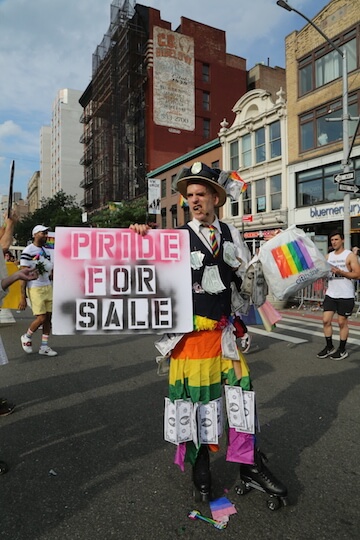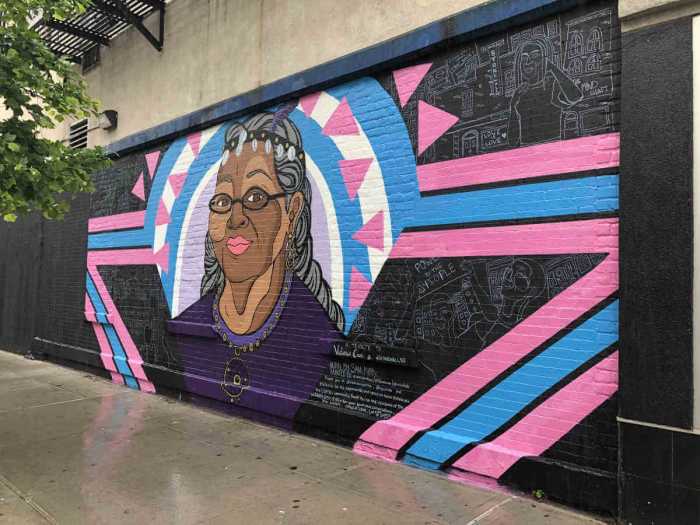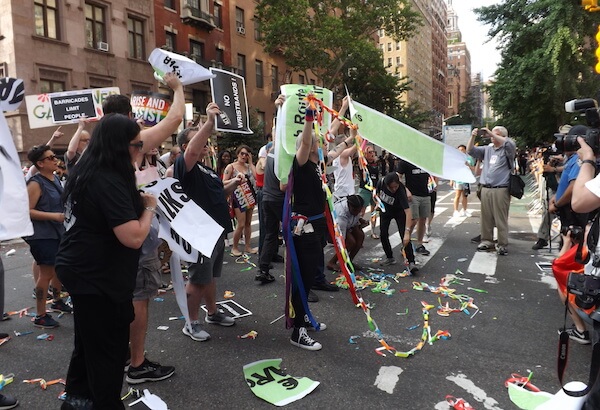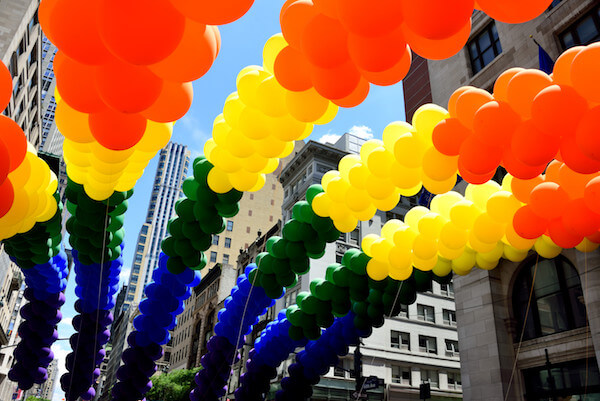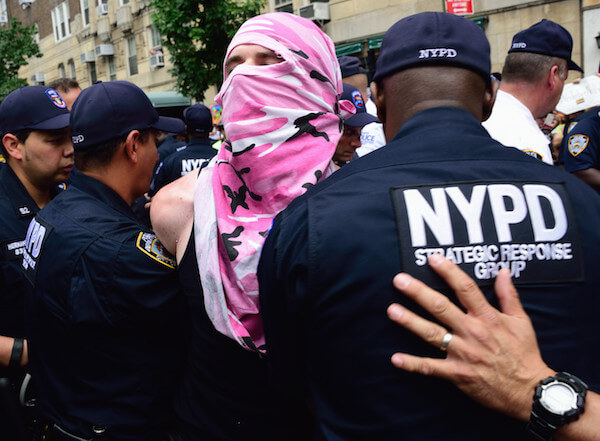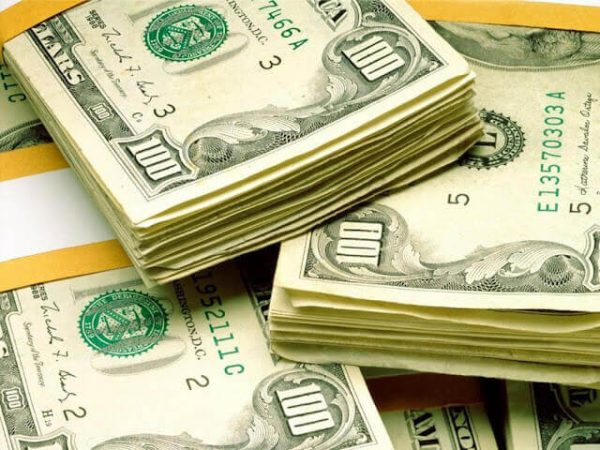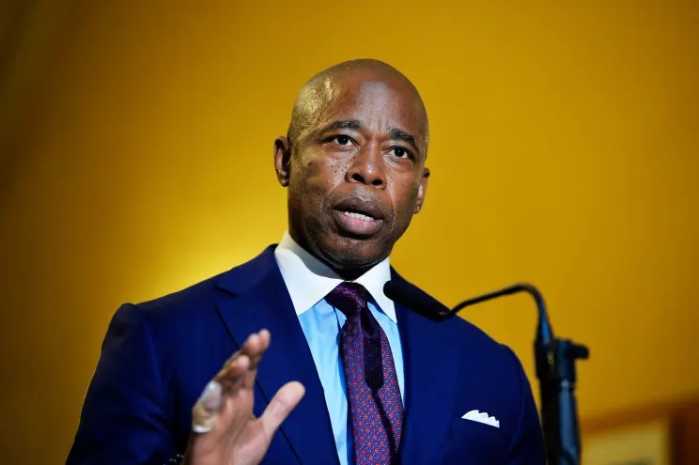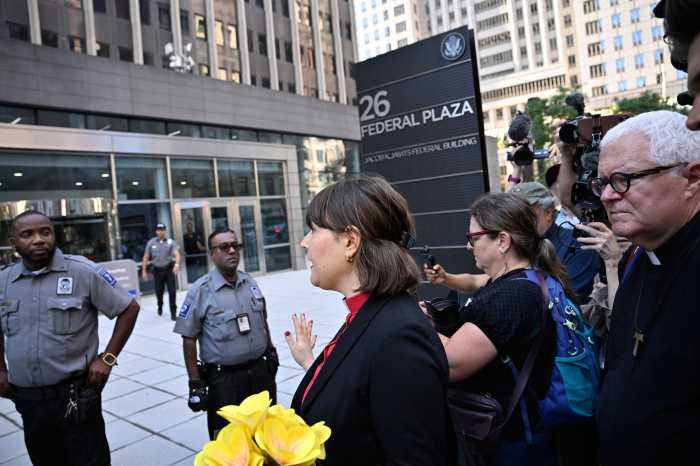HSBC, a banking corporation, was among 13 groups, most of them for-profit organizations, allowed to exceed the 200-member limit on the size of Pride Parade contingents. |
MICHAEL LUONGO
BY DUNCAN OSBORNE
| After saying repeatedly in public meetings that all contingents in New York City’s LGBTQ Pride Parade would be limited to no more than 200 marchers, the group that produces the annual march and related events allowed 13 organizations, including 11 of its sponsors, to field contingents that had more than 200 marchers.
“We were told that the necessity of having wristbands was to limit the numbers in corporate contingents,” said Ken Kidd, who led the organizing for a Resistance contingent in the 2017 Pride Parade. “To hear that, in fact, corporations were the only contingents that were allowed to have significantly more than the 200 limit is exasperating and infuriating. It would be surprising if we were talking about any organization other than Heritage of Pride. They play fast and loose with the truth and the rules that they themselves set and the messaging and communication they have with the community.”
PVH, the apparel company, had 800 marchers, according to the line of march published by Heritage of Pride (HOP). L’Oreal USA and Kiehl’s Since 1851, a L’Oreal brand, were listed as having 400 marchers each, though it is possible those contingents, which shared one float, shared 400 marchers. Chris Salgardo, previously the Kiehl’s chief executive, was known for his prolific fundraising for LGBTQ causes.
Heritage of Pride extended 13 exceptions to its size limitations on groups marching June 24
Citibank had 400 marchers as did cable giant Comcast-NBCUniversal. WNBC, an NBCUniversal local TV station, was a sponsor. Delta, the airline, had 300. Deutsche Bank and HSBC, a bank, each had 250 marchers. The NBA had 220 marchers. T-Mobile had 300 marchers.
Four non-profits were also allowed to exceed the 200-marcher limit. Only two of the four were sponsors.
NYU Langone Health, a medical center and school, was permitted 400 marchers as was the State University of New York (SUNY). Both were sponsors.
God’s Love We Deliver, which delivers meals to home-bound people, was allowed 250 marchers. God’s Love was not a HOP sponsor, but it did hold a joint fundraiser with HOP on June 21. The God’s Love contingent was co-branded with Whole Foods, which was a sponsor, and Dr. Praeger’s, also a food company.
The Gender and Family Project of the Ackerman Institute for the Family was co-branded with the Bank of America. They were allowed 250 marchers. Neither the Project nor the bank was a sponsor.
A sign held aloft in the June 24 LGBTQ Pride Parade. |
MICHAEL LUONGO
HOP, which has produced the city’s annual Pride events since 1984, told activists and the broader community in public meetings this spring that parade contingents would be limited to 200 marchers. To enforce that limit, HOP distributed wristbands, which were controversial, to all contingents and required marchers to wear them. The number of wristbands given to a contingent was based on the attendance predicted by contingent organizers.
The limitation on marchers was part of an effort this year to shorten the time the march takes to finish. HOP had fewer floats and vehicles in the 2018 parade compared to last year. It reversed the route so that it began in Chelsea, headed south on Seventh Avenue, east on Christopher and Eighth Streets, then north on Fifth Avenue to end at 29th Street. Ultimately, the parade ended at 9:14 p.m., which was 24 minutes shorter than the 2017 parade. The 2016 and 2015 parades were each roughly eight hours long.
The annual events commemorate the 1969 Stonewall riots, which mark the start of the modern LGBTQ rights movement. HOP is expecting a far larger crowd in 2019, the 50th anniversary of the Stonewall riots, and the changes this year were a test to see if they might reduce the impact of next year’s events.
A group of activists organized as the Reclaim Pride Coalition made a number of demands on HOP this year, including eliminating the use of wristbands and reducing the size of corporate contingents in the parade. One explanation offered by HOP in defense of the 200-marcher limit was that it would reduce the footprint of corporate contingents. Activists could not recall HOP ever saying that there would be exceptions to that rule.
“I never received any formal communications in regard to that,” said Natalie James, who did much of the organizing of the Coalition and this year’s resistance contingent. “This just goes to their unrelenting lack of communication with the community. I’m not surprised that HOP has completely gone back on its stated rules for the march.”
Activists “demanded no limits on community and activist groups,” James said. That corporate groups were favored “goes against the very nature of what we believe the day should be about,” she added.
HOP did not respond to a request for comment.

